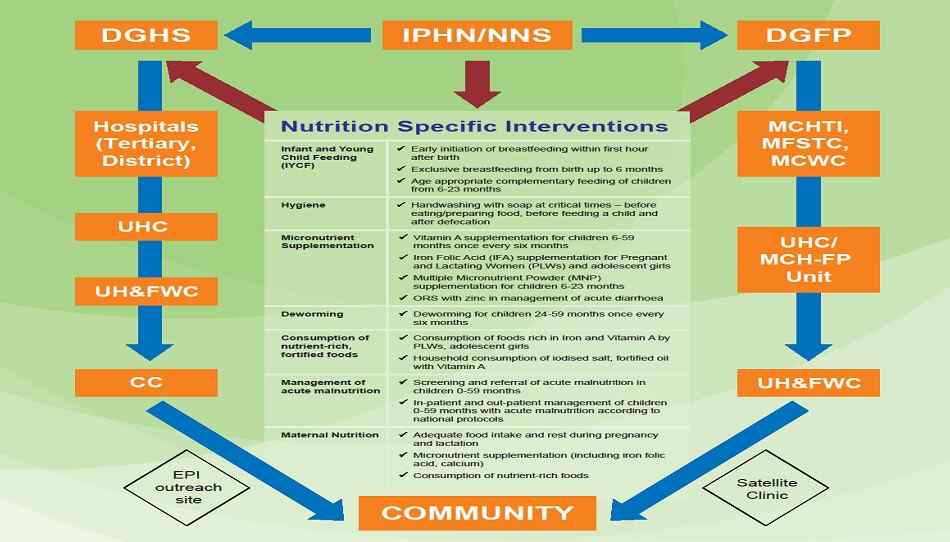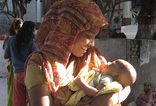
In
Bangladesh, despite the impressive progress in maternal and child health indicators,
the prevalence of child under nutrition remains one of the highest in the world with 41%
of under-fives suffering from stunting. This poor nutrition status exists across all wealth
quintiles. Even in the highest wealth quintile, 25.7% of under-fives are stunted and 12% are
acutely malnourished.Because of its geographical location, Bangladesh knows a heavy monsoon and
very violent natural disasters that are affecting it more frequently; have a devastating impact
on the most vulnerable populations (food insecurity, downgrading of the quality of water, massive
migrations to overcrowded slums,etc.
The high levels of under nutrition among young Bangladeshi children can be attributed to both
intrauterine growth retardation (IUGR) and postnatal growth faltering. Short maternal stature,
low pre-pregnancy body mass index and low pregnancy weight gain are the main determinants of IUGR.
Postnatal growth faltering is due to factors including inappropriate feeding practices such as,
lack of exclusive breastfeeding from 0-5 months, inadequate and inappropriate complementary feeding,
and a high prevalence of infectious illnesses.Breastfeeding is almost universal in Bangladesh;
however the exclusive breastfeeding practiced increased up to 63.5% (BDHS 2011) percent from the earlier
43% (BDHS 2007) of children aged 0-5 months ,which was remains relatively unchanged over the past decade
before 2007.
Implementation of Direct nutrition intervention is one of key intervention to overcome the undernutrition
status of Bangladesh. DGFP along with National nutrition services is committed to focus on improving nutrition
status of women and young children. Government of Bangladesh is very much committed to implement nutrition
activities and DGFP/NNS is providing adequate training,ensuring proper supplies and regular supervisory monitoring
of activities to improve nutrition status of women and children..
Mainstreming nutrition into health & Family Planning services in Bangladesh, a concepcutal framework.





